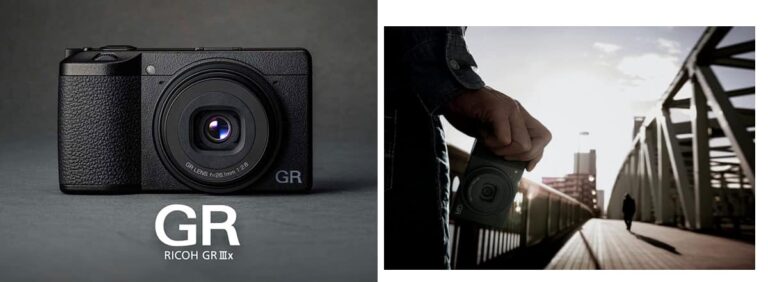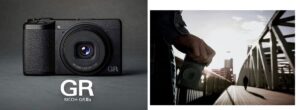The pocketable Ricoh GR IIIx digital camera features a powerful 24-megapixel APS-C sensor and a pretty outstanding 40mm equivalent f/2.8 lens. The lens is razor crisp across the whole frame, providing excellent image quality. The camera includes built-in image stabilization that works well to decrease camera shaking (for stills only). Due to the GR IIIx’s modest size, controls are quite disorganized. The LCD’s size and quality are mediocre, and it’s unfortunate that it can’t tilt up for filming at waist level.
One of the tiniest professional cameras on the market, the GR IIIx is actually compact. It can fit in a tiny handbag or the side pocket of your pants because it is just 2.4 by 4.3 by 1.4 inches (HWD) in size.
What will you see here?
Design

The Ricoh GR IIIx appears to be a straightforward, reliable camera. It’s shorter, slimmer, and deeper than a smartphone. The GR IIIx fits comfortably into a pant pocket and is as compact as APS-C cameras can go. It’s also quite light, weighing only 262g with battery and chip.
The Ricoh GR IIIx allows you to hold and touch focus in the same manner as you would while shooting with a phone, allowing you to relax and blend in while shooting in public. Only one operation in any mode is a breeze if you don’t really need touch focus, especially when using the optional thumb grip.
There is more to the tough Ricoh GR IIIx than meets the eye, despite its straightforwardness and point-and-shoot functionality. Exposure adjustments, including exposure correction, are made via dual dials. The back dial is easily knocked if a thumb grip isn’t in place, but pushing it in reveals a fast access menu for frequently changed settings, including Picture Styles, Focus mode, Metering, File Type, and screen brightness.
Assigning a wide range of parameters, such as Auto ISO with control over the very minimum allowable shutter speed, and the Focus mode with the innovative Snap Focus. Custom shooting modes are incredibly helpful for people who take the time to design unique camera settings for specific conditions.
Features & Performance
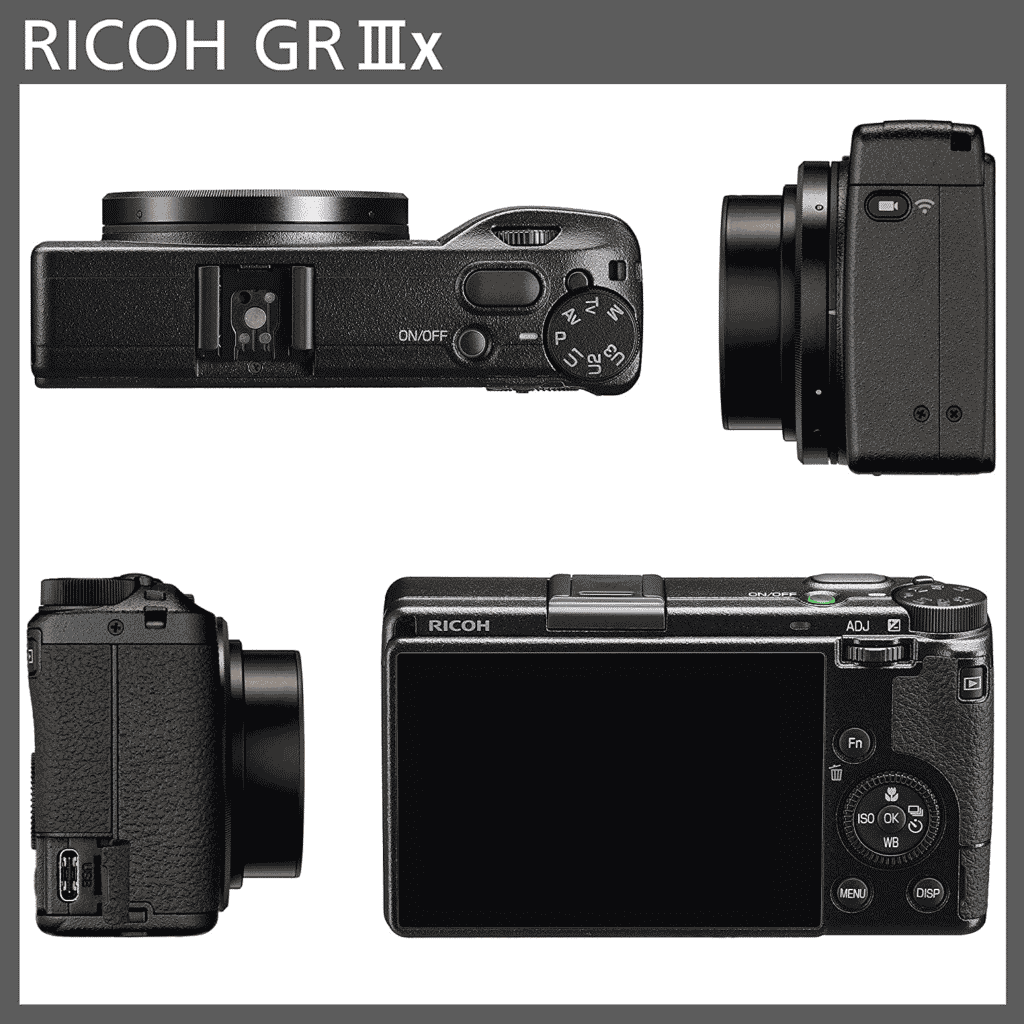
Ricoh has improved the GR IIIx to appeal to experienced photographers who need a straightforward, adaptable camera with a quick reaction. The GR IIIx starts up in a flash, snaps photos within just a second after being turned off, and has a quick shutter reaction.
Our estimation for the shooting rate in continuous drive mode is roughly 4 frames per second. You have about 10 photos in the raw DNG format before the camera starts to slow down, compared to more than 150 in the JPEG-only version.
Snap Focus is one of the concentrate settings, which allows you to focus at a specified distance in half-meter increments starting at one meter or infinity. Fortunately, touch focus may briefly override Quick Focus if it is set to the incorrect distance. In the fast access menu, other AF modes are accessible.
With the new 40mm lens, Snap Focus is a different game than it is with the 28mm lens on the GR III since the depth of field is smaller and less tolerant at any given aperture and distance. When photographing close up at f/2.8, it is completely feasible to miss your focus point. Fortunately, there is an on-screen depth of field indicator that allows you to examine the depth of field settings.
Image Quality
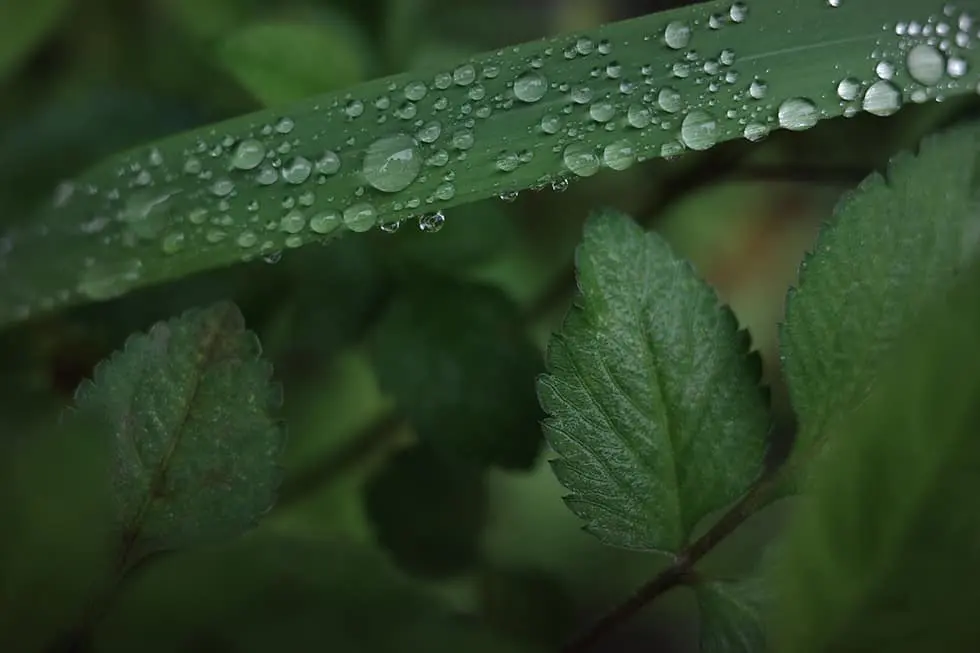
The Ricoh GR IIIx shoots in JPEG and raw DNG files using the same 24.2MP APS-C CMOS sensor as the GR III. On both old and modern software, DNG is widely accepted. There has a wide ISO 100–102,400 sensitivity range, making it possible to photograph at up to ISO 6,400 without worrying about noise. ISO 25,600 is also suitable. The best ISO range for perfectly clean photos is between 100 and 1,600.
In comparison to the 28mm f/2.8 lens, which has seven elements in five groups, including two aspherical elements, the new 40mm f/2.8 lens contains one extra lens element. Although you will lose crucial sharpness at f/2.8 and higher, the picture detail may be dependably crisp from the center to the corners of the frame, which is impressive for such a small lens.
The Ricoh GR IIIx promotes photographers over videographers. Full HD is the only available resolution, and there is no microphone input for externally recording sound into the camera. However, frame rates may exceed 60p, allowing for on-the-go slo-mo half-speed films and a natural shallow depth of field at f/2.8 which elevates videos above that taken on a phone. sharpness is crucial at f/2.8 and f/16.
Power & connectivity
For photographers searching for all-day battery life, the 200-shot CIPA rating falls short of the 320 pictures the GR II can produce under identical conditions. Your experience may differ, but after the first few expeditions and a hundred frames with the camera, I noticed a few bars missing on the battery indicator, in accordance with predictions. For weekend excursions, bring a backup. The cost of extra DB-110 batteries is $39.95. Additionally, USB-C allows for on-the-go charging. It’s a great difference from the odd USB charging port on GR II.
The internal capacity of the GR IIIx is 2GB, which can store around 40 Raw photos or 140 JPGs. Whereas most people should get a good UHS-I SDXC card to carry more images, it is useful if you lose your memory card.
Wireless radios for Bluetooth and Wi-Fi are built-in. The Ricoh Image Sync app, a free download for iOS and Android, connects to the GR IIIx. A simple but not completely automatic setup requires you to enter an identifying code from the camera’s screen into your phone and confirm with a pin that also appears on the GR’s display.
Price
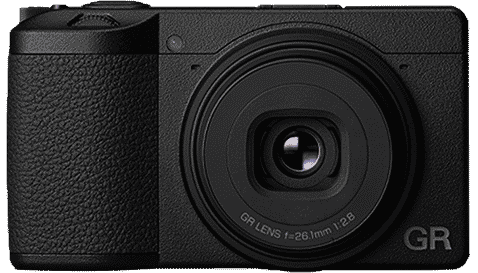
Ricoh GR IIIx digital camera is available at a price of $996.95*/ £899.00*. You can order it from
Is Ricoh GR III worth it?
Overall, the Ricoh GR III has been a joy to use, a few overheating issues excluded. A reliable, user-friendly, small fixed-lens camera is the Ricoh GR III. A $500 difference between it and the Fujifilm X100V. That camera, though, is waterproof.
Is Ricoh GR III a digital film camera?
The Ricoh GR III is the most recent digital version of the famous GR series camera. Which has a long history among street photographers. Compact camera with an APS-C sensor, the GR III weighs only 257g.
Why is Ricoh GR so popular?
Ricoh’s lack of obtrusiveness is its most notable feature. Due to its little size, most people treat the camera more like a toy and don’t take it seriously. A large DSLR might pose problems since it can make you appear to be a paparazzi, which makes people angrier.
Conclusion
Ricoh GR IIIx is a Fun Pocket digital Camera, It’s small enough to fit in a pocket. Easy to use & customizable features that an experienced photographer would love to have in a camera. You should not buy it if you want a versatile camera cause it is a theme-based camera. Aside from its lens and minor features, it is identical to GR-II & GR street version. Ricoh GR IIIx got poor battery performance, No Tilt screen, and jittery Auto-Focus. Aside from this, it is a good pocket Camera.
Read More
- Sony Xperia 5 III: Powerful camera and top specs in one!
- Sony Xperia 1 III: Definitely not like others!
- Sony Xperia 10 III: Mid-range Market is Fiercely competitive!
- Sony Xperia 1 IV vs Sony Xperia 1 III – Which One Should You Opt For!
- Best Sony phones for better Camera & Battery life at affordable rates!


